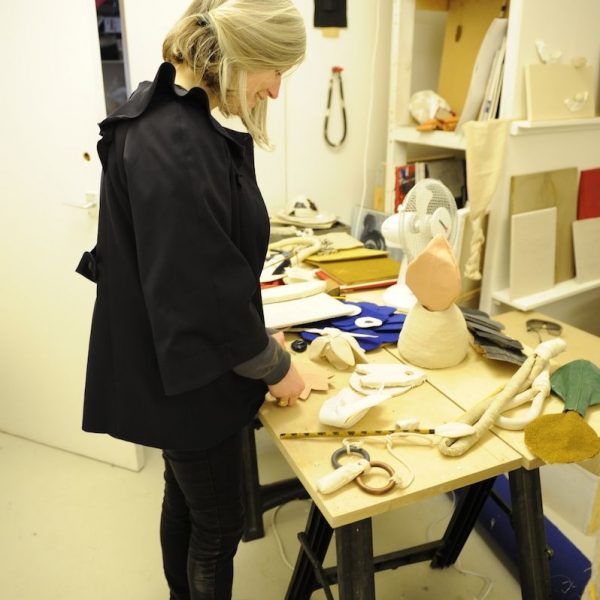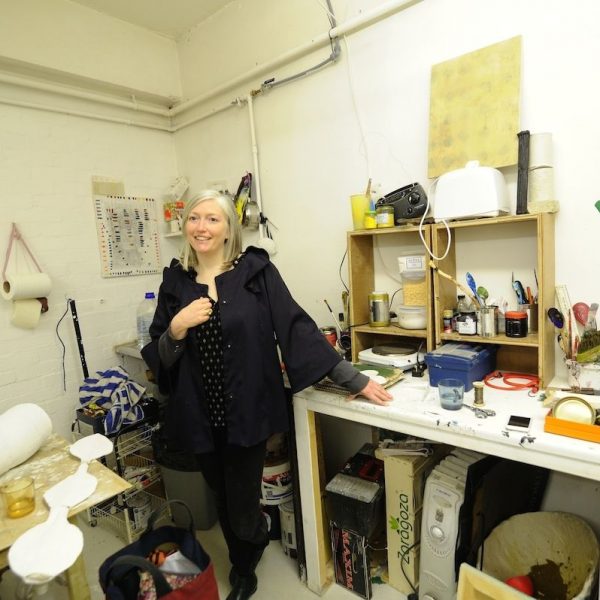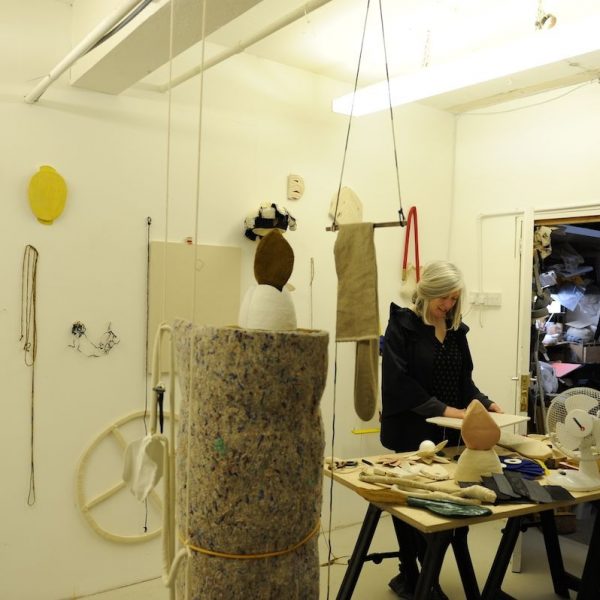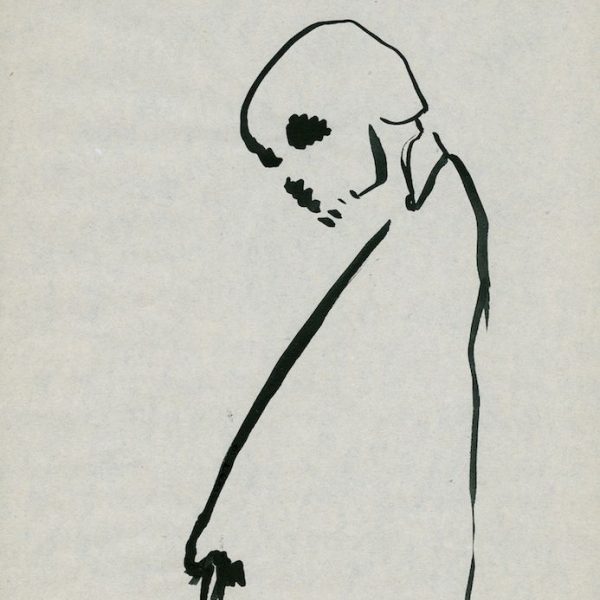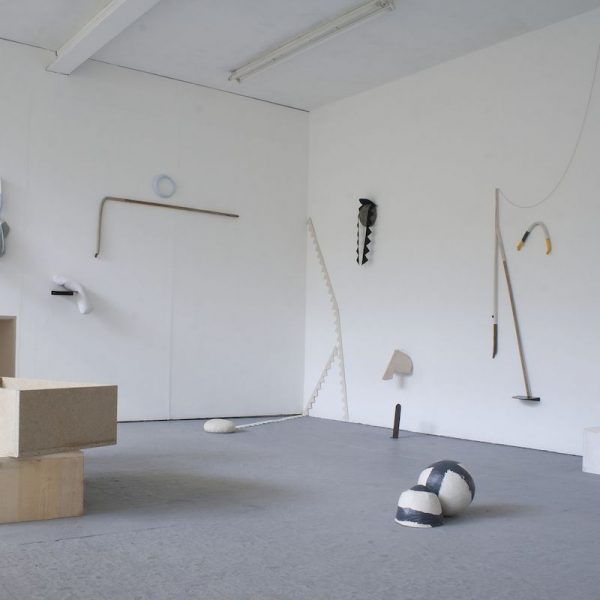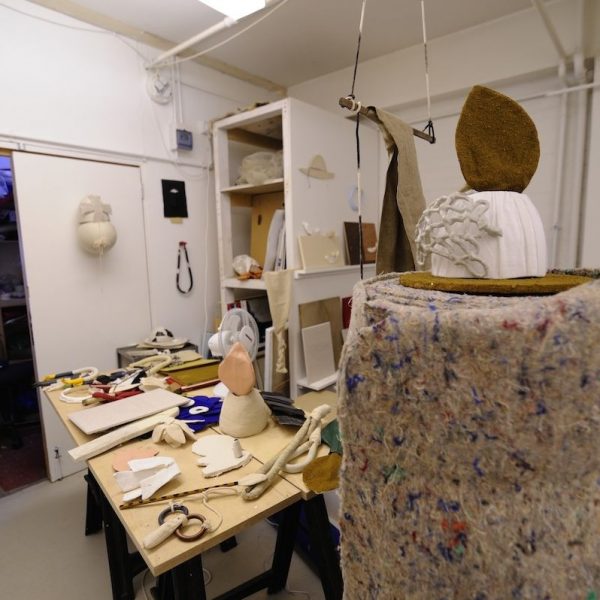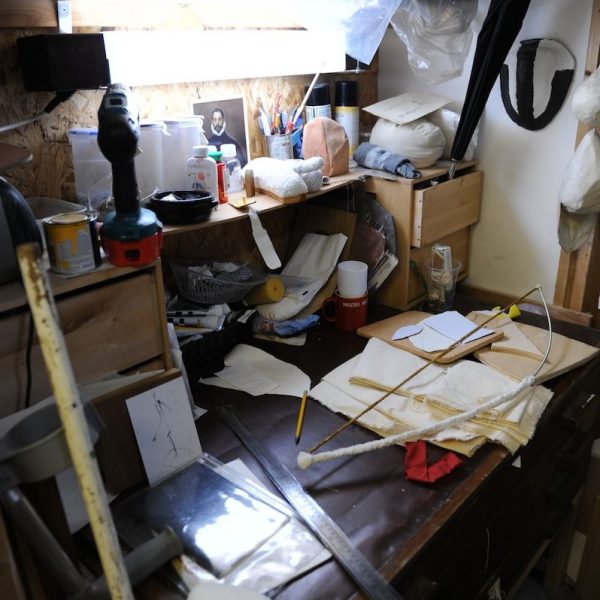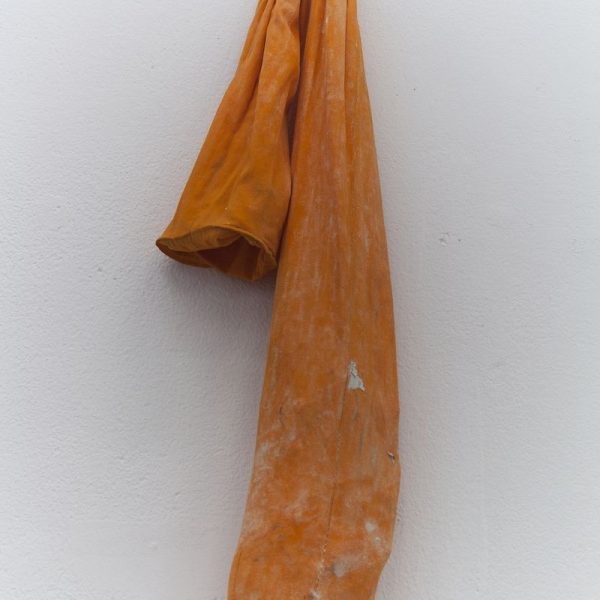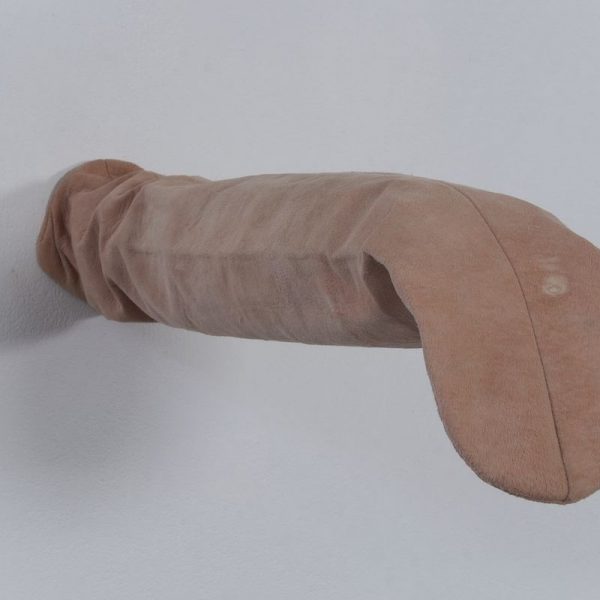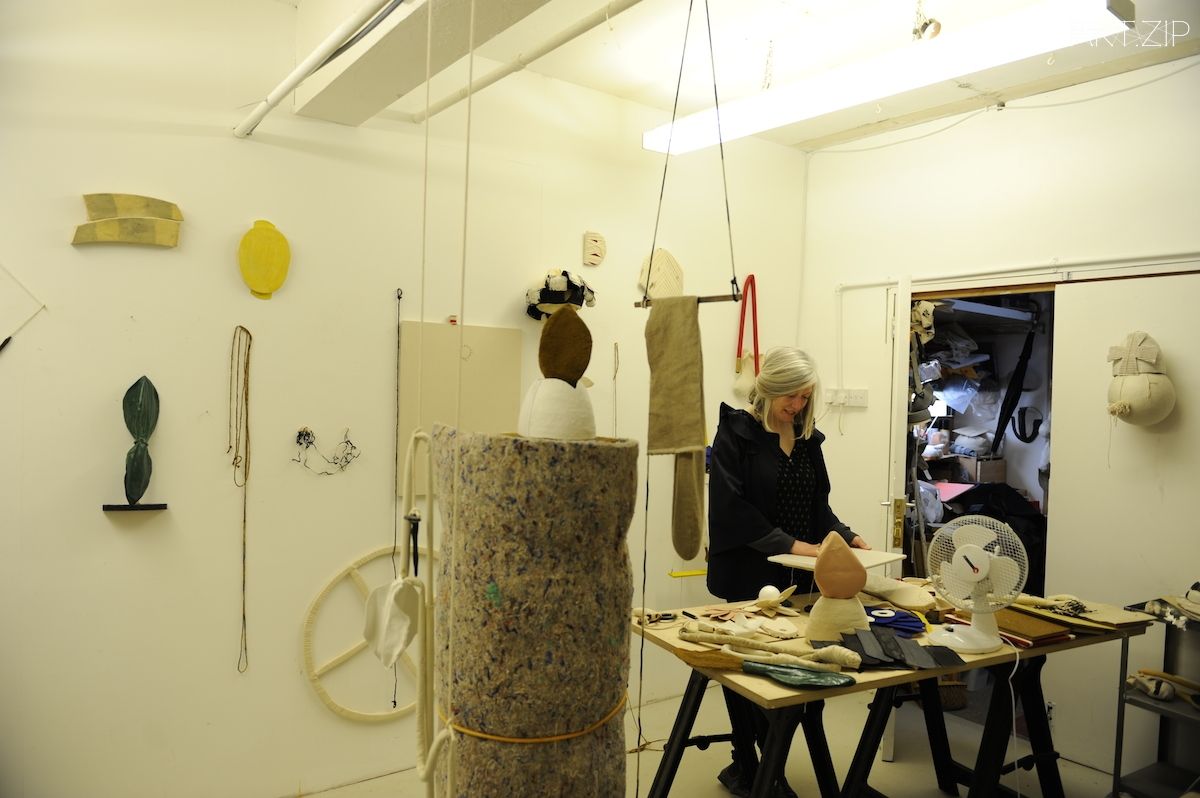
TEXT AND IMAGE BY 圖文提供 x Sarah Pettitt 莎拉·佩蒂特
TRANSLATED BY 翻譯 x Yu Chang 于暢
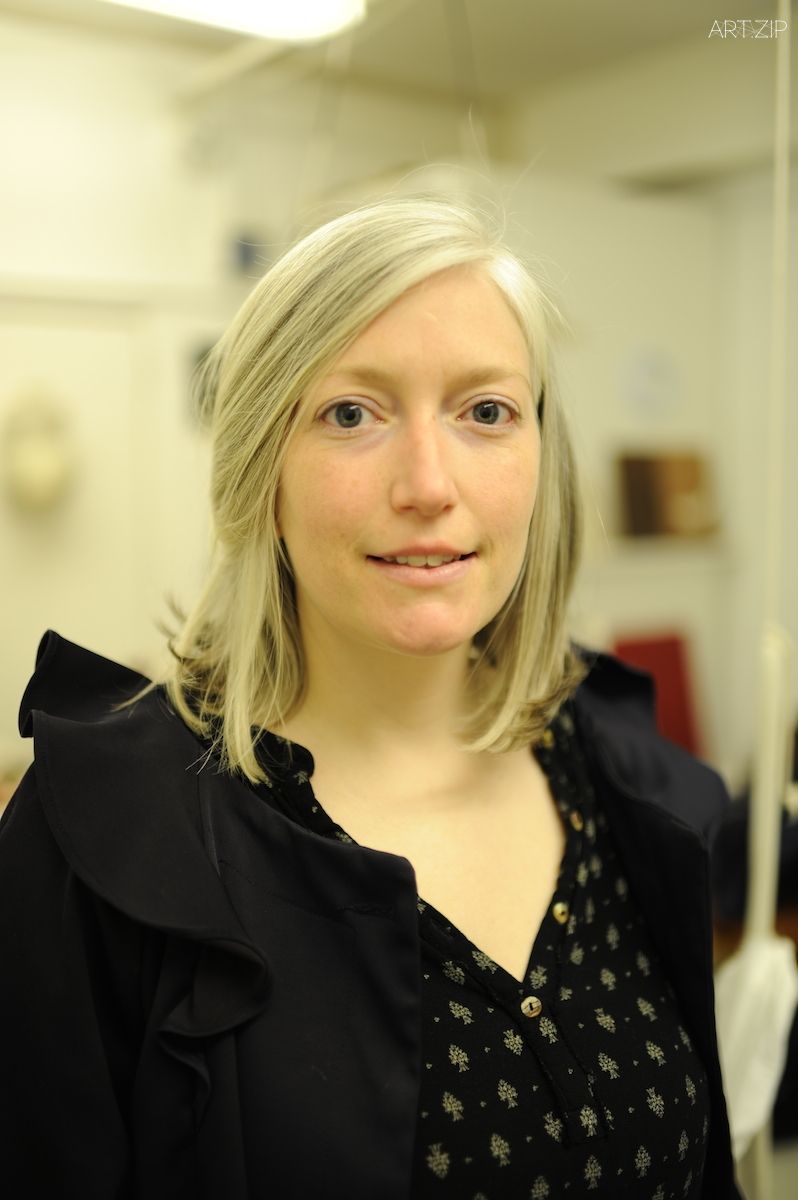
My father has always had many sheds but in particular was a great source of shame. It was constructed entirely out of mismatched planks of wood and built specifically to store other planks of wood. Then one day he bought a boat and I vividly remember its arrival, as plank after plank was carried into the garden and the loving process of its reconstruction began. He has always refers to his boats as his ‘shed on the mud’ and as much as anything he uses it as place to think. I often consider that haphazard shed, which of course I now love, in relation to the studio. My studio is a small unit in a larger building of artists’ studios but if I have to imagine my studio’s outside when I am inside, perhaps it is made of planks of wood. Like the building blocks of my thinking, the order can be changed around but it is the substance of the material that remains vital.
我的父親一直擁有許多棚屋,但一提及,卻是很丟臉的一件事。這些棚屋完全是由不匹配的木板搭建而成,用途也是存放其他木板。一天,他忽然買了艘船回來,而我也清楚地記得這艘船的到來,在父親將其一塊木板一塊木板地逐漸擡進花園之後,精心的改造過程就開始了。父親一直稱呼他的船為“泥上棚屋”,這是他獨自躲起來想事情的小基地。我那時候想,那座亂糟糟的棚屋就是所謂的工作室吧。現在回想起來,那真是非常溫馨可愛的地方。我現在的工作室在一座大廈裡,算是藝術家工作室大廈裡的一個小單元吧。如果讓處在室內的我來想像這個工作室從外面看起來的樣子,它大抵也是這麼一個由木板搭建而成的小屋。我想,思想的建構大概也像木板一樣層層搭建的,順序可以變,但什麼樣的木板才是至關重要的。
Many artists have built their dream studio and lots have been preserved, from Lord Leighton’s glamorous studio-house complete with its reconstructed Turkish bath and elegant gardens designed to impress to Francis Bacon’s studio which, including the dust was transplanted from its London setting to Dublin. Making the pilgrimage to such studios is always rewarding. The reconstruction of Brancusi’s studio in Paris records how, for the last years of his life, he sought to find the ideal spatial arrangement for his work and how he would replace sold works with plaster casts to prevent the balance from changing. In Cézanne’s studio in Provence near his beloved Mont Sainte-Victoire, his coat still hangs on the wall as if waiting for his return and his objects litter the space – the raw material of so many iconic paintings both inside the studio and in the surrounding landscape. These spaces return to my studio with me and I work with the knowledge of the past seeping into the present.
許多藝術家已經建造出了他們夢想的工作室,很多工作室甚至也被保存至今,其中包括雷頓男爵(Lord Leighton)那所奢華的住宅式工作室,不管是土耳其浴室還是園林都被一一復原,那景致美得讓人歎為觀止;而弗朗西斯·培根(Francis Bacon)的工作室重建更是連工作室裡的塵土都原封不動地從倫敦挪到都柏林。前往這樣的工作室朝聖往往是有益的。康斯坦丁·布朗庫西(Constantin Brancusi)的巴黎工作室重建記錄了他晚年時如何為自己的作品進行最好的陳列,他甚至用石膏模型來填補那些已經出售的作品的空缺來避免打破空間的平衡。塞尚(Cézanne)在普羅旺斯的工作室坐落於他鐘愛的聖維克多山附近,工作室墻上仍舊掛著他的大衣,他的其他物品也散落在工作室各處,仿佛在等待主人的歸來。其用於製作大量代表作的原材料遍布工作室內外。這些藝術家和工作室都深深影響著我。
The local studios I visit are those of my friends, to discuss our work and to support one another in our creative endeavors, for as well as a precious sanctuary, the studio can be home to failure and guilt – like an albatross around the neck. Having a studio is the utmost luxury but also the site of worry and frustration. Similarly I welcome anyone who wants to come and take a look – others’ reaction to my work is always rewarding and fuels new ideas, thoughts and conversation. Recently my friend Robert Rivers has joined me in my studio and so now the atmosphere changes depending on whether we are both there or not. It’s a great help to occasionally have another pair of eyes or particularly another pair of hands and at lunch time we discuss our work.
除了大師的工作室,我也愛拜訪朋友的工作空間,一來可以討論作品,二來也能互相鼓勵,進行各種大膽的嘗試。工作室不僅僅是藝術家的避風港,其實也是接納失敗的地方。擁有自己的工作室其實是奢侈的,但同時也是充滿憂慮和挫敗的地方。我歡迎所有想來參觀的人,因為他人對我作品的反饋往往能激發我新的想法。最近我的朋友羅伯特·理弗斯(Robert Rivers)也加入到我的工作室來,因此工作室氛圍取決於我們兩人是否都在。有別人在場一起工作總是很不一樣的,多雙手幫忙也總是很好的,午餐的時候還能一起討論作品。
I try to keep the studio tidy and to designate certain sections to processes, for example I work with a hot plate and wax in one area, I do woodwork in another and I have a separate section for drawing and sewing which is supposed to remain clean. When I say tidy, I try to keep things ship-shape but usually I get carried away and have everything out, I find it is the best way to continually surprise myself is jumping from one process to another – generally causing havoc. I usually know where everything is at any one time with the exception of the hammer, so I now have three. Part of the reason it can get so cluttered is also because I like to surround myself with my work, like a living sketchbook of ideas, pieces of texture, surface and colour in the form of unfinished smaller works pile up in boxes and trays around me on flat surfaces. I only put things away once I have finished thinking with them but more often than not they get swallowed into new works.
我努力使工作室保持整潔,並於特定角落進行特定的工作,例如,我會在這片區域使用熱板和石蠟,而另一邊則是進行木工活的區域,還有一個角落是我繪圖和縫紉的地方,因此這個特定的角落就需要盡可能地保持整潔。我認為的整潔應該是井井有條的,但其實我很容易失控,一不小心就把所有東西都翻了出來。而我最能讓自己抓狂的其實就是從一個程序步驟跳到另一個,這經常把工作室容易弄得一團糟。我一般都能記住工具放在哪裡,除了鐵錘,我總是找不到,所以現在我有三把鐵錘。工作室之所以會變得如此雜亂的部分原因也在於我喜歡自己被作品包圍的感覺,散落各處的各種布料和作品小樣就像立體草稿本一樣。我只會收拾那些已經完成的作品,不過很多時候它們又會被新的作品而淹沒。
Occasionally I work from home, especially on larger sewing projects or if I am making a series of drawings, however, increasingly I find myself wanting to make the work in just one place. The studio contains an energy and the works feed off one another, developing a language of their own which bleeds from one piece to the next. I do not have a solid conceptual plan and because of this the studio is where the work resides more than anywhere, it is born from a practice of making not thinking, an intimate and gestural practice where skill is played with and investigated but not mastered.
我偶爾也會在家裡創作,特別是一些大型的縫紉作品,又或者是系列繪畫,然而,我越來越發現自己更喜歡在一個固定的地方工作。工作室更富有生氣,作品本身能夠成為一種獨特的語言,因此互相呼應。我並沒有固定的實質性計劃,因此大部分作品都擱置在工作室裡,它們都是我一步一步通過親身試驗摸索而做出來的,並不是憑空想像的。
The work is often exhibited as it has been hung in the studio, not always but sometimes – a work will be placed at a strange height, often to keep it out of harm’s way or because there happened to be a nail already there, but this becomes part of it, changing my perception of it by the way it activates a space. In the Twentieth Century a special relationship between the work itself and the studio has developed and it is something which has greatly informed the display of contemporary art whether it is the ‘working tables’ of Eva Hesse or Gabriel Orozco which allow left overs or unfinished works to creep into the gallery space or generally a less precious attitude towards exhibiting.
我的作品經常以懸掛的方式陳列在工作室當中,有時候你會發現一個作
品被擱置在一個很奇怪的高度,那通常是為了避免損壞他們,又或者恰巧那個位置有一枚釘子。不管怎麽樣,這些都成為作品的一部分,影響了我的同時也改變了原來的空間。在20世紀,作品本身和工作室之間形成了一種特殊的關系,這在很大程度上也影響了當代藝術的展示方式,無論是伊娃·海瑟(Eva Hesse)的《工作桌》,還是加布理埃爾·奧羅斯科(Gabriel Orozco)的半成品,這些都一並與其作品進行同場展示。
This slippage between the studio and the gallery imbues the work with the ghost of the studio, it remains present in the object both physically in its materiality as well as in its placement. This is certainly true for my practice. The studio is a place where the work has its own life-force, a certain control; retrieving his fag-end from under a table in Giacometti’s studio Jean Genet recalls finding the most beautiful sculpture which had been hidden in the dust, questioning him why, Giacometti replied, ‘If it is truly strong, it will show itself, even if I hide it.’
作品儘管從工作室移到了畫廊,但其實工作室的靈魂已經融入到作品當中,影響著作品的最終呈現,不管是外觀還是呈現方式。這對我來說是無可置疑的。在工作室裡的作品都有一種生命力,一股自我控制的能量。讓·熱內(Jean Genet)在收拾阿爾伯托·賈科梅蒂(Alberto Giacometti)的工作室時驚訝地發現最美的雕塑竟藏在桌底並佈滿灰塵,問及原因,賈科梅蒂說:“如果這作品足夠好,就算我藏起來也必定會被發現的。”

